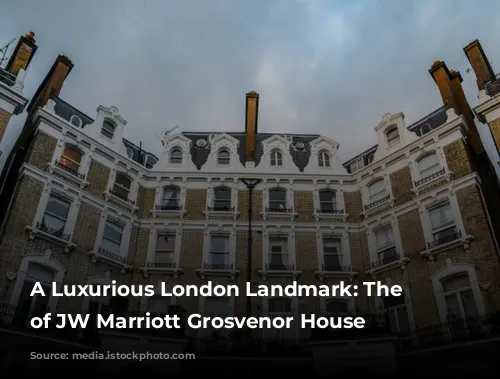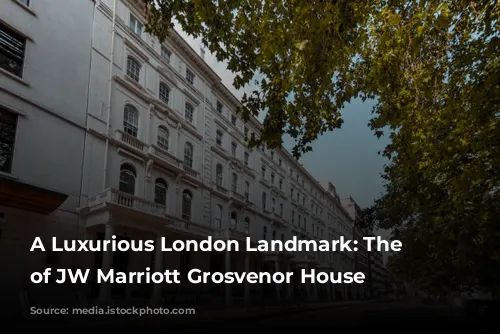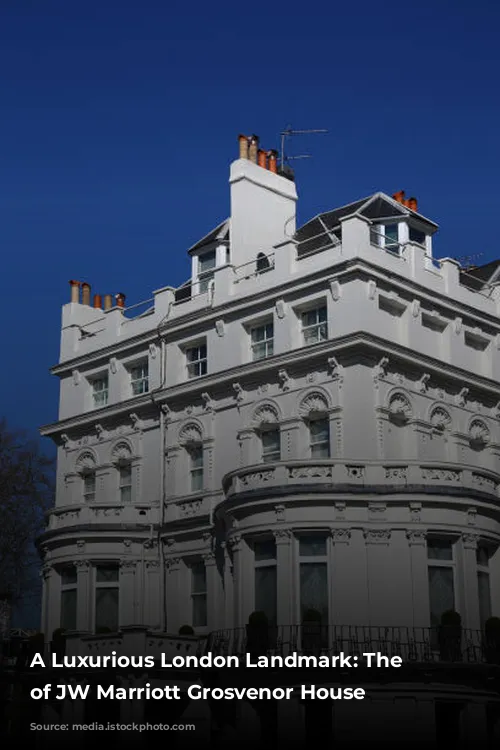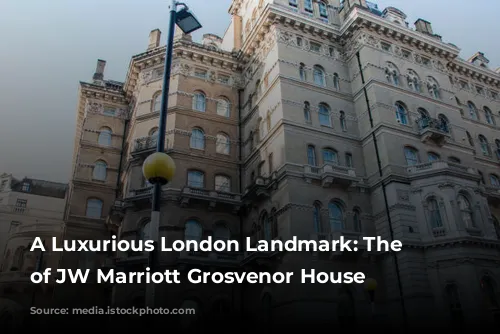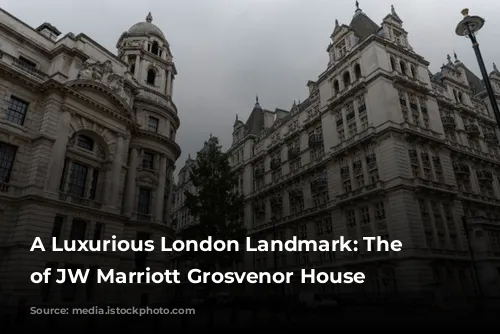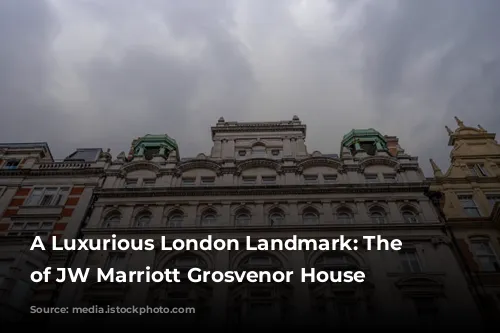Nestled in the heart of London’s prestigious Mayfair district, across from the sprawling Hyde Park, stands a majestic hotel with a rich history: JW Marriott Grosvenor House. This opulent establishment, formerly known as the Grosvenor House Hotel, has been a symbol of luxury and grandeur since its opening in 1929. Built on the site of the 19th-century Grosvenor House, the former London residence of the Dukes of Westminster, the hotel’s legacy is intertwined with the city’s aristocratic past.
From Humble Beginnings to Opulence
The story of the Grosvenor House Hotel begins with the vision of Arthur Octavius Edwards, a man who dreamt of creating a haven of luxury in the heart of London. In the 1920s, he embarked on the ambitious project of building a grand hotel on the site of the former Grosvenor House. Edwards, a visionary entrepreneur, presided over the hotel’s construction and served as its chairman for a decade, ensuring his vision was brought to life.
One key figure in the hotel’s early years was A.H. Jones, who joined Edwards’ team in 1929 as an accountant. Jones’s dedication and sharp business acumen quickly caught Edwards’ eye, leading to his promotion to General Manager in 1936. Jones played a vital role in shaping the hotel’s identity, steering it through the challenges of World War II and overseeing its growth in the post-war era.
Enduring Through World War II
Despite the tumultuous period of World War II, Grosvenor House remained a beacon of resilience. The hotel’s spacious ballroom and grand halls were repurposed to support the war effort. The iconic Great Room, now a renowned venue for prestigious events, became a haven for officers from both British and American forces. Generals Dwight D. Eisenhower and George S. Patton, prominent figures in the Allied victory, were frequent visitors, adding a historical dimension to the hotel’s legacy.

Expansion and Modernization
The 1950s marked a period of expansion for Grosvenor House. After a long legal battle, a 92-bedroom extension was added to the hotel, adding to its already impressive capacity. The new wing, completed in 1957, was a testament to the hotel’s continued growth and its enduring appeal to discerning travelers.
In the 21st century, Grosvenor House underwent a significant transformation. A £142 million renovation and restoration project, completed in 2008, revitalized the hotel, bringing its amenities and services up to the highest modern standards. This extensive refurbishment touched every aspect of the hotel, from the guest rooms to the restaurants, health facilities, and public spaces. Today, the hotel boasts an impressive 494 guest rooms, world-class restaurants, state-of-the-art meeting facilities, and a spacious ballroom capable of hosting events for over 6,000 people.
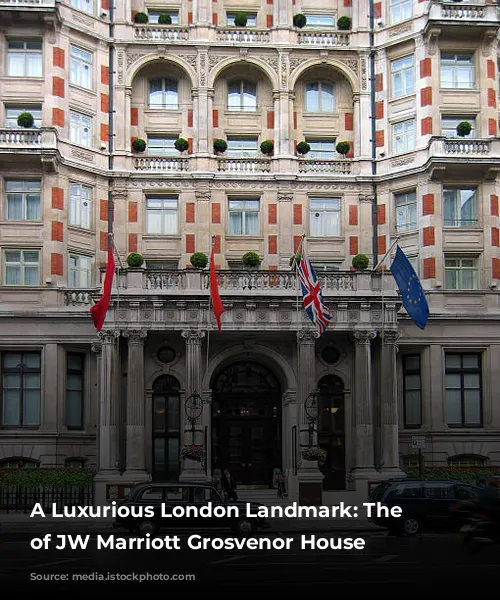
A Legacy of Luxury and Change
Over the years, Grosvenor House has seen its ownership change hands several times, reflecting the evolving landscape of the global hospitality industry. In 2010, Indian conglomerate Sahara India Pariwar acquired the hotel, marking a significant shift in its ownership. In 2018, Katara Hospitality, a Qatari state-owned company, acquired the hotel, adding another chapter to its illustrious history.
The hotel has also been the subject of controversy. In 2017, it drew protests when it hosted the annual gathering of the Aerospace Defence Security group (ADS), a trade association representing arms companies. Campaigners criticized some ADS member companies for their role in arming Saudi Arabia during its conflict in Yemen.
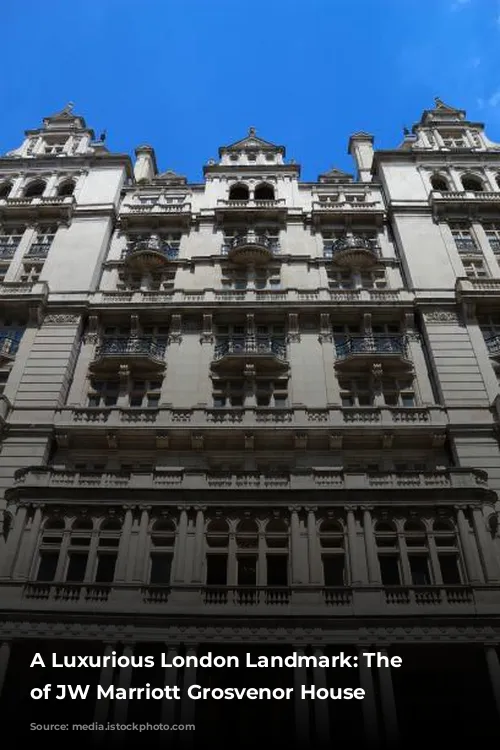
A Glimpse into the Past: Grosvenor House’s Unique Features
Grosvenor House holds a unique place in London’s history. It was one of the first hotels in the city to offer separate bathrooms and entrance lobbies for each bedroom, a luxury unheard of at the time. The hotel also featured a range of amenities that were considered cutting-edge for their era, including Turkish baths, a swimming pool, squash courts, and a gymnasium.
One of the hotel’s most iconic features is the Great Room, a grand ballroom with a rich history. The Great Room has hosted a wide range of events, from prestigious awards ceremonies to charity balls, and has been a prominent feature in British television. The room originally served as an ice rink, where Princess Elizabeth, the future Queen Elizabeth II, learned to skate as a child. The rink was later converted into the magnificent ballroom it is today.

Continuing Legacy
Today, JW Marriott Grosvenor House continues to be a thriving destination for discerning travelers and a renowned venue for special events. With its rich history, elegant accommodations, and impeccable service, it remains a landmark of luxury in the heart of London, attracting visitors from all corners of the globe.
